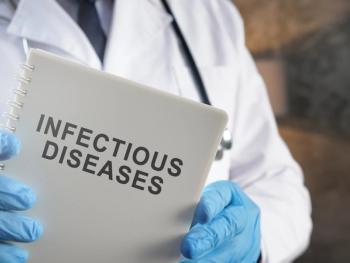
Is It Still Shingles If There’s No Rash?
Cases of shingles with no rash may be more common than previously thought.
Shingles is practically synonymous with the word “rash.” In fact, a blistering red rash that begins a few days after the onset of pain is one of the classic symptoms that clinches the diagnosis. But sometimes shingles presents without a rash, a condition called zoster sine herpete (ZSH), and it’s important to know how to identify and treat it.
ZSH may actually be more common than previously believed, according to Anne Louise Oaklander, MD, PhD, a neurologist and director of the Nerve Unit at Massachusetts General Hospital. She says it used to be thought of as “unusual and suspect.” But extensive studies related to the shingles vaccine Shingrix have provided lots of new information about the herpes zoster virus and shingles. As a result, Oaklander says ZSH may end up being the rule rather than the exception.
“One of the things that emerged from these studies is the fact that most shingles infections are mild and many are subclinical,” she told Drug Topics. “The virus is more active than we thought and it’s re-erupting in a partial way that very often is going to pass unrecognized.”
People with ZSH exhibit all the other characteristic signs of shingles including a deep and painful burning sensation, pain radiating from the spine, sensitivity to touch, general achiness, itchiness, numbness, headache, and fatigue. Symptoms are almost always isolated on one side of the body, commonly occurring on the face and neck or in the eyes, although they can also show up in internal organs.
Zoster sine herpete can also impact cranial or spinal nerves that provide motor function to body and facial muscles. When this happens, patients can experience weakness in an arm or leg or of the diaphragm muscles that control breathing. If the cranial nerve is affected, the result can be Ramsay Hunt syndrome (herpes zoster oticus), which causes facial palsies and potential hearing loss in the affected ear.
Just as with a classic case of shingles, ZSH can also cause postherpetic neuralgia, although the risk is reduced. “The likelihood of having PHN or any of the serious complications increases with the severity of the neurologic damage, and the rash is one marker of the severity of the neurologic damage,” explains Oaklander. “If you don’t have a rash, it suggests you don’t have a very large infection and you’re not going to have a lot of nerve damage, so you’re less likely to have complications.”
ZSH can be difficult to diagnose based on symptoms alone. Patients may need to have their blood, cerebrospinal fluid, or saliva tested to detect the presence of antibodies and confirm the shingles diagnosis. The standard treatment is antivirals such as acyclovir (Zovirax), famciclovir (Famvir), and valacyclovir (Valtrex), which should be initiated as quickly as possible after onset of symptoms.
Newsletter
Pharmacy practice is always changing. Stay ahead of the curve with the Drug Topics newsletter and get the latest drug information, industry trends, and patient care tips.































































































































